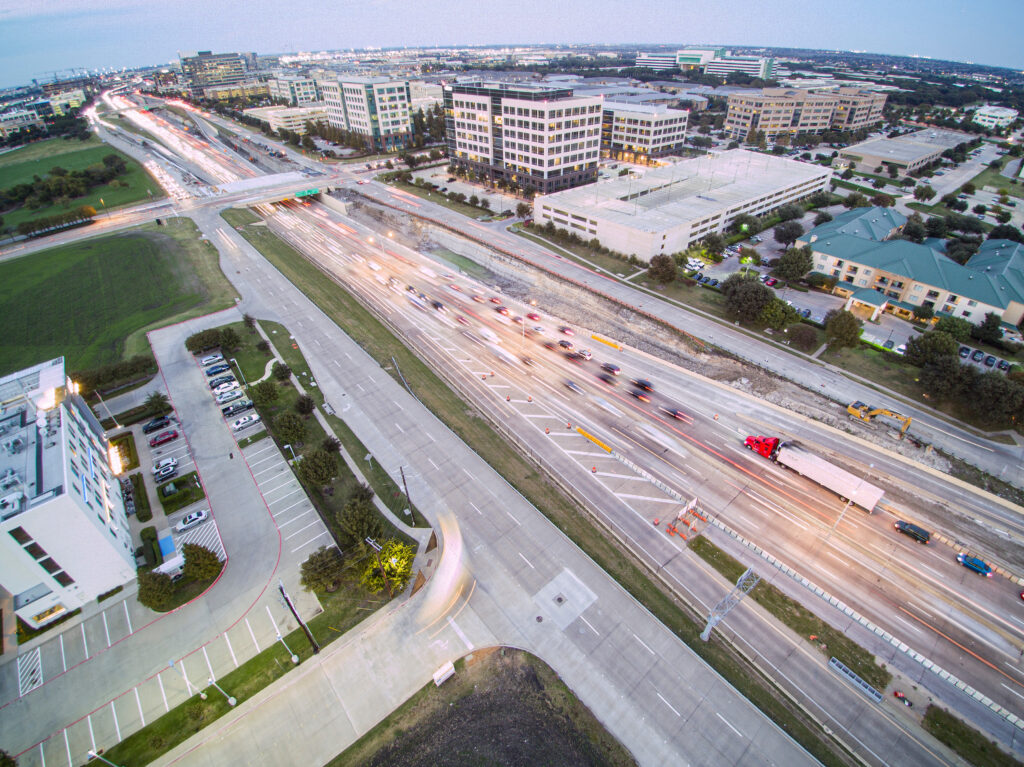Active Projects  City of Plano
City of Plano

How Plano Discovered Almost $500,000 in Potential Savings Using Blyncy’s Automated AI-powered Platform
The City of Plano, Texas conducted an “apples to apples” comparison of their traditional manual method of surveying four centerline miles of roadway to Blyncsy’s Blyncsy product analyzing the same four miles of roadway. The outcomes highlight the high level of detail and insight that Blyncsy can deliver to cities, ensuring results equal to and at times better than those of manual surveys. Additionally, Blyncsy costs 90% less than surveying the traditional way.
$475,238
potential savings for City of Plano with Blyncsy
23x
Manual inspection cost compared to using Blyncsy
90%
Reduction in manual surveys required
Region
Plano, TX
Country
US
Agency
City of Plano
In this Article
Share ⟶

Solving Unique Challenges
Road maintenance is a costly and labor-intensive task that requires significant investment from state and federal agencies. According to the American Society of Civil Engineers, there is a $2.6 trillion investment gap in America’s infrastructure. This is due in part to the high cost of manual labor required for road maintenance, which can account for up to 50% of the cost of road repairs.
Manual surveys are often used to assess the condition of roads and are extremely timeconsuming, while requiring significant resources. This boots on the ground approach to fixing roads also increases the carbon footprint of road maintenance operations. Additionally, road maintenance comes with significant risk of liability for agencies, as sending out employees to analyze roadways puts both drivers and employees at risk.
The City of Plano Transportation Engineering Division (Plano) received complaints and requests from multiple citizens about safety concerns and speeding along the Los Rios Boulevard corridor from 14th Street to Parker Road. As a result, Plano conducted a traffic safety audit to investigate and identify traffic safety issues as well as develop solutions.
In addition to Plano’s manual survey, the city wanted to analyze what can be done automatically with Blyncsy versus what requires an engineer to go into the field and apply their professional engineering skills to evaluate specific problems on their roadways.
Alongside Plano’s manual survey of this four mile roadway, Blyncsy conducted its own survey utilizing crowdsourced dashcam imagery and artificial intelligence. Through Blyncsy’s various partnerships with dashcam providers, Blyncsy is able to crowdsource imagery from over 400,000 vehicles nationwide. Using this imagery, Blyncsy applies machine learning algorithms to automatically detect the quality of various roadway assets.
The purpose of this project was to compare the results of a four mile road survey conducted by Blyncsy and by a manual road survey. This case study highlights the amount of time and money that the City of Plano saved by using Blyncsy compared to manual surveys; and highlights the level of detail that Blyncsy provides. The study also highlights the need for an engineer’s evaluation to provide engineering judgment and decision-making by performing a manual survey.
The Project
The Plano division was divided into five pairs of two engineers each to do a manual survey by driving the roughly four centerline miles of roadway and recording their findings. The city’s manual survey was strictly visual. The division then shared their findings for internal discussion and created work orders to fix the identified issues. The City of Plano noted that each pair of engineers had to drive back and forth along the four mile stretch several times in order to survey the entire road properly.
Plano’s primary goal of the traffic safety audit was to ensure the corridor was operating in a safe and efficient manner as well as complying to codes and standards, such as the Manual on Uniform Traffic Control Devices (MUTCD). The manual survey included numerous drives back and forth along the corridor, a curve ball bank speed study, and photo and video recordings to enhance visual detection. In addition to identifying missing or incorrect traffic control, crash data and citizen requests’ history were also reviewed and analyzed as part of Plano’s study.
Alongside Plano’s manual survey, Blyncsy collected crowdsourced dashcam imagery along four centerline miles of roadway. Blyncsy analyzed the imagery collected using machine learning algorithms. By segmenting imagery with artificial intelligence, Blyncsy allows Plano to see their roads through the lens of machine vision. Blyncsy surveyed 4 miles of roadway for 11 different asset types discussed in detail in Figure 1 below. All of this data was uploaded to the Blyncsy platform for Plano employees to view.

In Plano’s report of their manual visual survey, they identified approximately 38 issues on the four mile stretch of roadway between the five pairs of engineers. Blyncsy identified seven of the same maintenance issues. However, the other 31 issues were out of scope for Blyncsy’s survey. It is important to note that Blyncsy is capable of identifying many of these issues through computer vision. The issues identified by Plano are listed below along with some figures for specific examples.

Plano Findings vs Blyncsy Findings
Plano compiled their findings from the five different pairs of engineers into a cohesive report. The identified issues are stated in the above section. Through comparing Plano’s report with Blyncsy’s findings, Blyncsy was able to identify seven of the same maintenance issues.
It is important to note that Plano was surveying for more roadway assets than Blyncsy through their manual survey. For example, using engineering judgment, Plano identified missing signs that had not been installed previously and also identified signs that should be added at specific locations to enhance safety.
Blyncsy is able to detect missing signs if given historical data of signs that have been previously installed. Blyncsy can also notify Plano of any changes in sign condition over time.
Issues Plano Identified
Did Blyncsy Detect This?
Part of Blyncsy's Survey?
"35 MPH SPEED LIMIT" signs are either only in the median or only in the parkway area
Uneven road conditions near railroad tracks between Plano Parkway and 14th Street
Crosswalk markings are faded @ Camino Dr/Dottie Dr and Los Rios Boulevard
Lighting is missing or needs replacement; dual arm luminaire recommended at six locations
Uneven road conditions near bridge over Rowlett Creek
Signs are obscured by trees
Conclusion and Findings
Both Blyncsy and Plano surveyed 11 different asset types within four miles of roadway. Blyncsy ended up saving Plano time, money, and resources. In this comparison, Blyncsy saved Plano an average of 20 man hours, $1,307, and 450 pounds of carbon emissions in just four miles. In addition to hard costs, there’s also great increases in safety to drivers, pedestrians, and bicyclists by improved lighting, better crosswalks, etc. Poorer neighborhoods are also served equally by using Blyncsy in part by the excellent coverage.
While Blyncsy has the ability to quickly identify and record inventory, it will never fully replace the need for a manual survey. There are some issues that Blyncsy cannot easily identify and also some issues that Plano cannot easily identify. From this “apples-to-apples” comparison, this case study shows how Blyncsy can reduce the number of manual surveys required by more than 90%, which saves considerable time and money. At the same time, it highlights how manual surveys are still needed in order to provide engineering judgment, make decisions, and develop solutions.



